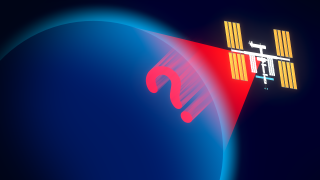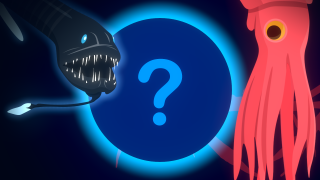The Mysterious Planet
Published: December 7, 2024 at 8:28 PM (PT)
7:32
(13562 frames/30fps) Resolution:1920x1080
(FHD) Most Rewatched:5:29 to 5:47 Realtime Statistics...
30 Minutes...
Hour...
24 Hours...
Information Sources
https://www.reddit.com/r/Mars/comments/18445sm/what_is_the_current_highest_resolution_dem/?rdt=52690
Mars Mapped Resolution (2)https://astrogeology.usgs.gov/search/map/mars_viking_colorized_global_mosaic_232m
Earth Factshttps://en.wikipedia.org/wiki/Earth
Resolution of Sea Floor Mapshttps://oceanexplorer.noaa.gov/world-oceans-day-2015/how-much-of-the-seafloor-is-left-to-explore.html
Water is the Most Abundant Moleculehttps://www.wikidoc.org/index.php/Water_(molecule)
Over 80% of the Ocean is Unexploredhttps://oceana.org/blog/why-does-so-much-ocean-remain-unexplored-and-unprotected
Land Area of Countrieshttps://www.worldometers.info/geography/largest-countries-in-the-world
Diving Depthshttps://www.custom-wetsuits.com/blog/how-deep-can-a-human-dive
Mid to Deep Diving Submersibleshttps://tritonsubs.com/subs
Average Depth of the Oceanhttps://oceanservice.noaa.gov/facts/oceandepth.html
Average Walking Pacehttps://www.researchgate.net/publication/344166318_Walkability_Index_for_Elderly_Health_A_Proposal
Visibility at Depthhttps://tritonsubs.com/media/gallery/#iLightbox[gallery_image_1]/32
Time to Explore the Sea FloorCalculated
Exploration Submersibles Builthttps://tritonsubs.com/wp-content/uploads/Commercial-Brochure-2023-final.pdf
Industrial ROVshttps://www.oilfieldtechnology.com/exploration/21032014/roving_further_every_year
Amount of People Who Have Been to Spacehttps://en.wikipedia.org/wiki/List_of_space_travelers_by_nationality
Number of People Who Have Visited the Titanichttps://www.history.com/news/you-can-visit-the-titanic-but-only-if-you-act-fast
Number of People Who Have Visited Challenger Deephttps://en.wikipedia.org/wiki/Challenger_Deep
Number of Marine Species Discovered Yearlyhttps://www.coastalwiki.org/wiki/Number_of_marine_species
The Ocean Ridgehttps://en.wikipedia.org/wiki/Mid-ocean_ridge
Andes Factshttps://en.wikipedia.org/wiki/Andes
Mariana Trench Factshttps://en.wikipedia.org/Mariana_Trench
Calculated based on volumes from topography dataSize of the Grand Canyon vs the Mariana Trench
Mauna Kea Factshttps://en.wikipedia.org/wiki/Mauna_Kea
Amount of Deep-Ocean Volcanic Activityhttps://oceantoday.noaa.gov/deepoceanvolcanoes
Blue Whale Factshttps://en.wikipedia.org/wiki/Blue_whale
Dolphins are the Second Most Intelligent Animalhttps://sentientmedia.org/which-animals-are-most-intelligent
Colossal Squidhttps://en.wikipedia.org/wiki/Colossal_squid
Colossal Squid Photos or Videoshttps://petapixel.com/2024/05/29/scientists-think-theyve-captured-first-ever-footage-of-a-colossal-squid-baby
Species of Mammalshttps://academic.oup.com/jmammal/article-abstract/99/1/1/4834091?redirectedFrom=fulltext
Bird Specieshttps://datazone.birdlife.org/userfiles/file/Species/Taxonomy/Handbook%20of%20the%20Birds%20of%20the%20World%20and%20BirdLife%20International%20Digital%20Checklist%20of%20the%20Birds%20of%20the%20World_Version_9.pdf
Reptile Specieshttp://www.reptile-database.org/db-info/SpeciesStat.html
Amphibian Specieshttps://www.amphibianark.org/education/what-are-amphibians
Barreleyehttps://en.wikipedia.org/wiki/Barreleye
Oarfishhttps://en.wikipedia.org/wiki/Oarfish
White-Spotted Pufferfish Mating Ritualhttps://en.wikipedia.org/wiki/Pufferfish_mating_ritual
Japanese Spider Crabhttps://en.wikipedia.org/wiki/Japanese_spider_crab
Giant Isopodhttps://en.wikipedia.org/wiki/Giant_isopod
Black Dragonfishhttps://en.wikipedia.org/wiki/Idiacanthus_atlanticus
Deepsea Lizardfishhttps://en.wikipedia.org/wiki/Deepsea_lizardfish
Bigfin Squidhttps://en.wikipedia.org/wiki/Bigfin_squid
Lobed Combed Jellyhttps://en.wikipedia.org/wiki/Bolinopsis_infundibulum
Barreleye Discovery Datehttps://www.sci.news/biology/macropinna-microstoma-video-10377.html
"Nature had it first" Quote by Dr. Irwin Moonhttps://youtu.be/7HwEw-p-Yow?list=PL_rC1cWgkGvMv8o-FTMF3hS37gOzfCSOQ&t=81
Graphic Sources
https://pixabay.com/vectors/submersible-submarine-ocean-9219925
Mercury (Daniel Roberts)https://pixabay.com/vectors/mercury-planet-space-terrestrial-8233227
Earth (Daniel Roberts)https://pixabay.com/vectors/earth-planet-space-terrestrial-8233221
Magnifying Glass (Daniel Roberts)https://pixabay.com/vectors/magnifying-glass-magnification-lens-9219927
Water Drop (Daniel Roberts)https://pixabay.com/vectors/water-drop-liquid-fluid-nature-8904702
Dirt Bank (Daniel Roberts)N/A
Man Standing-Side (Daniel Roberts)https://pixabay.com/vectors/person-man-stand-human-arms-legs-9095533
Scuba Tanks (Daniel Roberts)https://pixabay.com/vectors/scuba-tanks-oxygen-diving-gear-9219926
Research Ship (Daniel Roberts)https://pixabay.com/vectors/ship-boat-research-vessel-sea-9219924
Robotic Underwater Vehicle (Daniel Roberts)https://pixabay.com/vectors/rov-robotic-underwater-vehicle-9243166
Space Shuttle (Daniel Roberts)https://pixabay.com/vectors/space-shuttle-rocket-challenger-8297058
Titanic Wreck (Daniel Roberts)https://pixabay.com/vectors/shipwreck-titanic-wreck-ship-sink-9243165
Deepsea Challenger Submersible (Daniel Roberts)https://www.shutterstock.com/image-vector/illustration-deepsea-challenger-dcv-1-submarine-2264582799
Jellyfish (Daniel Roberts)https://pixabay.com/vectors/jellyfish-marine-animal-nature-7747031
World Depth and Elevation Map (composite of NASA Visible Earth Bathymetry and Topography Maps) (Daniel Roberts)N/A
World Depth Map (NASA Visible Earth)https://visibleearth.nasa.gov/images/73963/bathymetry
World Elevation Map (NASA Visible Earth)https://visibleearth.nasa.gov/images/73934/topography
Mauna Kea (Daniel Roberts)N/A
Mount Everest (Daniel Roberts)https://pixabay.com/vectors/mount-everest-mountain-nature-8297059
Volcano (Daniel Roberts)N/A
Blue Whale (Daniel Roberts)https://pixabay.com/vectors/whale-blue-nature-animal-wild-7728288
Dolphin (Daniel Roberts)https://pixabay.com/vectors/dolphin-animal-baby-mammal-cartoon-7036679
Colossal Squid (Daniel Roberts)https://pixabay.com/vectors/colossal-squid-animal-nature-9245445
Man Standing-Front (Daniel Roberts)https://pixabay.com/vectors/person-man-stand-human-arms-legs-8238232
Great White Shark (Daniel Roberts)https://pixabay.com/vectors/shark-great-white-sea-creature-fish-7871133
Giraffe (Daniel Roberts)https://pixabay.com/vectors/giraffe-animal-nature-wild-8204924
Swift (Daniel Roberts)https://pixabay.com/vectors/swift-bird-nature-animal-wild-7871134
Chameleon (Daniel Roberts)https://pixabay.com/vectors/chameleon-lizard-animal-reptile-8204925
Tree Frog (Daniel Roberts)https://pixabay.com/vectors/frog-tree-frog-amphibian-animal-8207551
Barreleye (Daniel Roberts)https://pixabay.com/vectors/barreleye-fish-animal-nature-9245447
Oarfish (Daniel Roberts)https://pixabay.com/vectors/oarfish-fish-animal-nature-9245446
White-Spotted Pufferfish Circle (Hiroshi Kawase)https://www.flickr.com/photos/140071736@N03/25025697481/in/photostream
White-Spotted Pufferfish (Hiroshi Kawase)https://www.flickr.com/photos/140071736@N03/25092651286/in/photostream
Japanese Spider Crab (The Nature Box)https://www.youtube.com/watch?v=5aze8Sz0lRw
Japanese Spider Crab Silhouette (Daniel Roberts)https://blendertimer.com/web-tools/compare-size/images/nature/animals/crustaceans/Japanese_Spider_Crab-front.svg
Giant Isopod (NOAA Ocean Exploration)https://oceanexplorer.noaa.gov/video_playlist/ex1711-giant-isopod.html
Giant Isopod Silhouette (Daniel Roberts)N/A
Black Dragonfish (Daniel Roberts)https://pixabay.com/vectors/black-dragonfish-fish-animal-nature-9245448
Deepsea Lizardfish (NOAA Ocean Exploration)https://www.flickr.com/photos/oceanexplorergov/42477157585
Bigfin Squid (NOAA Ocean Exploration)https://oceanexplorer.noaa.gov/video_playlist/ex2107-bigfinsquid.html
Bigfin Squid Silhouette (Daniel Roberts)N/A
Lobed Comb Jelly (David Young)https://www.youtube.com/watch?v=s9BD7yxRec4
Other Marine Creatures 1 (NOAA Ocean Exploration)https://oceanexplorer.noaa.gov/okeanos/explorations/ex1304/logs/photolog/welcome.html
Other Marine Creatures 2 (NOAA Ocean Exploration)https://oceanexplorer.noaa.gov/image-gallery
Ancient Pot (felax)N/A
The Milky Way (Daniel Roberts)https://pixabay.com/vectors/milky-way-galaxy-abstract-space-8282020
Pond (Daniel Roberts)https://pixabay.com/vectors/pond-nature-lake-water-trees-7866335
Lightning (Daniel Roberts)N/A
Burj Khalifa (Daniel Roberts)https://pixabay.com/vectors/burj-khalifa-dubai-building-tall-8207549
Freight Train Engine (Daniel Roberts)https://pixabay.com/vectors/locomotive-train-freight-engine-9082607
Supercomputer (Daniel Roberts)https://pixabay.com/vectors/supercomputer-futuristic-computer-7884574
International Space Station (Daniel Roberts)https://pixabay.com/vectors/international-space-station-iss-9219928
Space Shuttle (Daniel Roberts)https://pixabay.com/vectors/space-shuttle-rocket-challenger-8297058
Airliner (Daniel Roberts)https://pixabay.com/vectors/airliner-airplane-flying-plane-8886817
Space Needle (Daniel Roberts)https://pixabay.com/vectors/space-needle-seattle-skyscraper-8652302
Audio Sources
N/A
Rise of the Enemy-30 seconds (Daniel Roberts)https://pixabay.com/music/main-title-rise-of-the-enemy-30-seconds-14303
Thunder (Daniel Roberts)https://pixabay.com/sound-effects/thunder-245174
To the Galaxy (Daniel Roberts)https://pixabay.com/music/ambient-to-the-galaxy-10734
Hit-02 (Daniel Roberts)N/A
Object Flyby (Daniel Roberts)https://pixabay.com/sound-effects/object-flyby-8115
Journey Through Nothing-Ambient Background Loop (Daniel Roberts)https://pixabay.com/music/adventure-journey-through-nothing-ambient-background-loop-232364
0017_explo_grenade_06_PremiumBeat (Detonate, PremiumBeat)https://www.premiumbeat.com/blog/free-explosion-sfx-vfx-elements
Metal Hit-01 (Daniel Roberts)N/A
Powerful Swoosh-01 (Daniel Roberts)N/A
Rescuer-Inspiring Cinematic (Daniel Roberts)https://pixabay.com/music/main-title-rescuer-inspiring-cinematic-229615
There is a planet very close to
us that is still mysterious to us.
A planet which has areas so hostile
that missions to those areas have
resulted in some of the most horrific
disasters humans have witnessed.
Despite mapping the entire surface
of Mars with a resolution of just
200 meters per pixel, most of
this mysterious planet has only
been mapped at a resolution of
1.5 kilometers per pixel. This
mysterious planet, is Earth. Despite
centuries of exploration and research
by billions of people, we still
know very little about our own planet.
In fact, one of the most mysterious
things about Earth, is one of
the most abundant.
The ocean is huge! And by huge,
I mean HUGE! Over 80% of the
ocean is completely unexplored
by humans. To put that into perspective,
if that 80% were the land, every
country except Russia and China
would be completely unexplored,
even the entirety of North America,
South America, Europe, Australia,
and even Africa!
But why is water so hostile?
Isn't it required for life?
Water is great until you have
too much, and while there isn't
too much water on Earth, there
can certainly be too much water
above you. This makes it incredibly
difficult to explore the ocean.
You see, while you can just walk
outside and explore the land,
you can't just go jump in the
ocean and swim around. Sure, you
can swim around near the surface,
but if you want to go any deeper
than a few meters, you're going
to need something to breath because,
fun fact, you can't really breath water.
But, even with some sort of breathing
apparatus to help you breath,
you still can't go deeper than
a few dozen meters. Fortunately,
submarines, or rather submersibles,
were specifically designed to
be submersed in water, making
them a great tool for exploring
the ocean. But...there's a problem.
Actually...there's far more than one.
Submersibles are incredibly
not good for exploring the ocean.
They require a significant amount
of knowledge and skill to operate
and maintain, so you're probably
not going to be building one yourself.
And, not only are they extremely
expensive themselves, they often
require an entire ship for deployment as well.
And, even if you can get past
all the first obstacles, most
submersibles can only go a few
hundred or maybe a couple thousand
meters which leaves nearly 70
percent of the ocean beyond reach.
But there's an even bigger problem.
Most submersibles, designed for
research and exploration, can
only travel a mere 3 knots which,
to be clear, is about the average
walking pace. This isn't a huge
issue since, only being able to
see a few meters in front of you,
you'll probably not want to go
any faster. Except...with such
a slow speed and low visibility,
even if you had a fleet of a
thousand submarines, it would
take a year just to glance over
everything. Well...to glance over
the floor of the ocean, not even
counting all the space between
the surface and the ocean floor.
To properly study everything would
take far longer. Not to mention
the troublesome fact that only
a few dozen exploration submersibles
have even been built, and many
are no longer in service. Granted,
there are a lot of robotic underwater
vehicles, but most of them are
used for industrial purposes,
not exploration, and many designed
for exploration still can't go
much deeper than a human.
To put into perspective just
how unexplored the ocean is, more
people have been to space than
have visited the Titanic wreck
site, and even fewer have been
to the deepest part of the ocean.
We know so little about our own
ocean that around 2 thousand new
marine species are discovered
every year or more than 5 every
single day.
But, despite how much we still
don't know about our own planet,
there are still some incredible
things which we do know.
The ocean is home to the longest
mountain range on Earth, the Ocean
Ridge which has a total length
of 80,000 kilometers, about 9
times longer than the Andes.
The ocean is also home to the
largest canyon, the Mariana Trench,
which is about 70 times larger
than the Grand Canyon.
The ocean is home to Mauna Kea
, the tallest mountain from base
to peak, being about 5% taller than Mt.
Everest's height above sea level.
The ocean is home to about 80%
of Earth's volcanic eruptions.
And as far as animals are concerned,
the ocean is home to the largest
and heaviest animal, the most
intelligent animal apart from
humans, the largest invertebrate
and the animal with the largest
eyes (which we currently have
no confirmed videos or photos
of), and tons of other animals
which are amazing! There are over
240,000 known marine species which
is more than 6 times the number
of species of mammals, birds,
reptiles, and amphibians combined!
Not to mention the possible 2
million others which have yet
to be discovered. So I think it's
safe to say that the ocean is
home to some of the most diverse
and strangely designed creatures
on Earth. Just a few of these
being the barreleye fish which
has a literal transparent head.
Talk about "I can see right through you"...
The oarfish which looks like
some sort of metallic robot and
is the longest bony fish.
This is not the creation of
some ancient civilization, it's
the creation of the white-spotted
pufferfish.
The Japanese spider crab which
is enough to give me nightmares.
The giant isopod which...
The black dragonfish which is
uh...uh...
This thing which looks like
some sort of deep sea lizard fish
something. Oh wait...that's what
it's called, well minus the something part.
This thing which also seems
to struggle eating spaghetti or...
wait that's not spaghetti.
This guy who somehow has RGB
lighting on himself.
And thousands of other insane
looking creatures which unfortunately
just didn't make the list, mainly
because...there are thousands.
I think it goes without saying,
but the mere fact that only 20%
or less of the ocean has been
explored, and most of this being
the deep ocean, there is no telling
what amazing creatures, ancient
artifacts, geological features,
and other stuff is down there.
I mean, the black dragonfish wasn't
discovered until 1906 and the
barreleye fish wasn't discovered
until 1939 with many other odd
looking marine creatures discovered
just within the past couple decades.
As fascinating as space is,
there is an arguably more diverse
and surprising world far closer to us.
Although, it feels like anything
I look at in the natural world
just keeps getting more amazing
the more I read or even discover
on my own. As impressive as some
of the creations of humans are,
I always seem to find that it
completely fades into nothingness
when compared to the creations
that came far before them. Even
as niche and unnatural as RGB
lighting, "Nature had it first."


 December 7, 2024
December 7, 2024 December 7 2024
December 7 2024